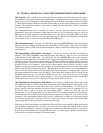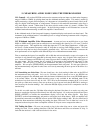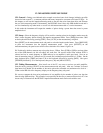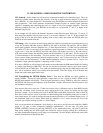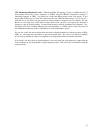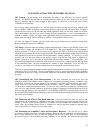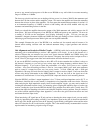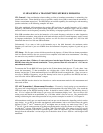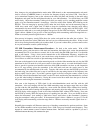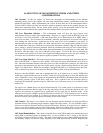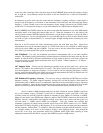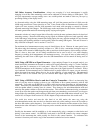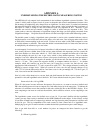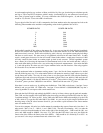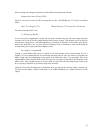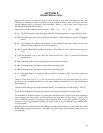27
Next change to the noise/demodulation mode under SSB channel on the measurement/mode sub panel.
And be sure the [CARRIER] button is on below the frequency display and select USB. Now tune to
you’re transmitter frequency, turn up the volume on the audio sub panel and listening to the audio using
headphones and speak into the microphone hooked to your AM transmitter. You should hear your USB
audio clearly. Adjust the transmitter’s mike gain for how you usually set it by watching modulator current
peaks or by the transmitter manual’s instructions. Select the widest filter without WTD filtering on the
HP3586. Turn on averaging by pressing [AVE] under the level display and set the measuring range to
100db entry mode with a upper limit of 0dbm to keep the instrument from changing range during
measurements for more reliable and stable readings with the rapidly varying audio side band signal. Now
speak into the mike and try to record the highest average level on the LED level display. If the measured
signal is below –80dbm or you get a UL on the level display while transmitting, reduce the range limit to –
20dbm to accurately measure signals down to –100dbm.
Now tune up in frequency exactly 5Khz above the carrier, and speak into the mike just as before. You
should see any emissions at least 30db below the level you saw when measuring the carrier. If they exceed
this level try turning down the mike gain to reduce them. If you can’t reduce them, you have some work to
do on your transmitter or audio system feeding it.
15.3 SSB Transmitter Measurement Procedure – Go back to the carrier mode. With a SSB
transmitter, place it into the tune or AM mode and transmitter the highest level carrier the manufacturer
recommends for CW or less than two seconds, this is also usually the peak SSB signal level. Use the mike
push to talk button. Using a short carrier transmission at the fundamental frequency, normalize the
HP3586’s level display to the level of your carrier burst, using the method of section 14.3 of Chapter 14.
You will have to work fast to do this to prevent damage to the transmitter.
Now tune to the harmonics in the carrier measuring mode as with the AM transmitter but only key the SSB
transmitter in the CW mode for a full power carrier in short bursts and try to record the harmonic levels.
Now to search for spurious non harmonic emissions which SSB transmitters can have at odd frequencies
due to IF stage mixing, place the transmitter in the AM mode and tune the carrier power to that
recommended by the manufactured of the radio. Turn the AM carrier and tune the HP3586 up and down
the band using your widest filter and a step of one KHz for the step tuning feature of the frequency tune
knob to rapidly scan for spurs. If you find a spurious signal, lock onto it using the counter, switch to your
20Hz filter, turn off the transmitter and switch it to the CW mode, and then key the transmitter for a second
as you did when looking for harmonics. During this second record how much down the spur is from the
full power carrier using the instrument’s level meter.
Now tune to the frequency of USB signal in the noise/demodulation mode and like with the AM
transmitter. Also use averaging with the auto 100db measuring range and upper range limit set to 0dbm
just like with the AM transmitter example for a more stable and readable audio sideband level reading.
Speak into the mike while listening with headphones and properly adjust the mike gain. Note the level on
the LED display with averaging on and in the widest instrument filter without WTD filtering. Now tune
the HP3586 up exactly 5KHz and repeat the test of speaking into the mike. Now you should be able to
reduce the instrument’s level reading to 30db below what it read before on the transmitter’s frequency
using the transmitter’s mike gain control. If the measured signal is below –80dbm or you get a UL on the
level display while transmitting, reduce the range limit to –20dbm to accurately measure signals down to –
100dbm.
Hopefully these examples will illustrate some ways of checking a transmitter for spurious emissions. Some
rice box SSB transmitters can have spurs barely down –30db a long way from their tuned frequency. They
depend on a tuned antenna system to further attenuate them. But there could be a problem if you use a
multiband antenna that may not attenuate the spur.



